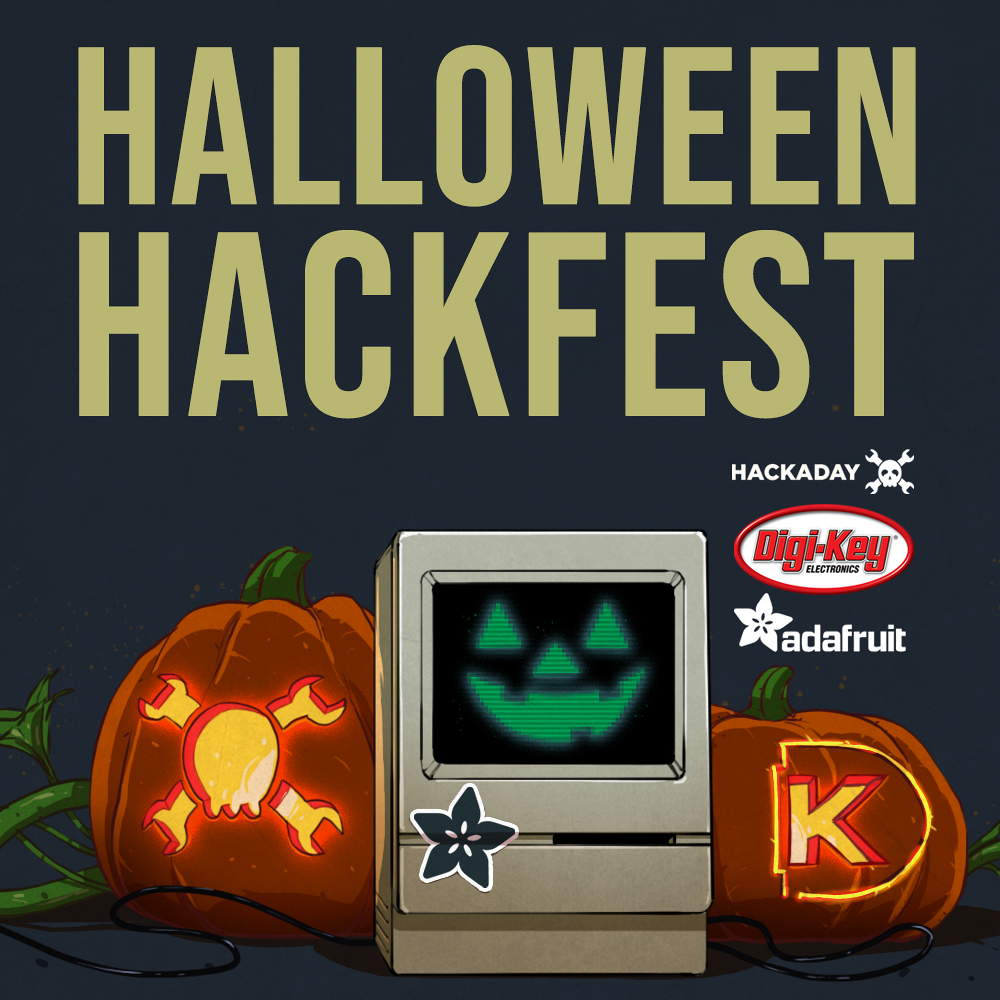Now that September has arrived, it is time to start thinking about Halloween projects!

Trick or Treat, It’s Time to Hack Halloween! Bring Your Costume Upgrades, Haunted House Hacks, and Halloween-themed Technical Projects!

Donald Papp writes about Oskitone on Hackaday:
We’ve always been delighted with the thoughtful and detailed write-ups that accompany each of [Tommy]’s synth products, and the background of his newest instrument, the Scout, is no exception. The Scout is specifically designed to be beginner-friendly, hackable, and uses 3D printed parts and components as much as possible. But there is much more to effectively using 3D printing as a production method than simply churning out parts. Everything needed to be carefully designed and tested, including the 3D printed battery holder, which we happen to think is a great idea.
From our friends at Alpenglow Industries:

This little cloud may look mean, but we promise it’s fun and easy to solder up!
This is a super fun and simple storm cloud blinky board. It has 3 self-flashing LEDs that act as the clouds lightning bolts! It also has an on/off switch and includes a CR2032 battery.
Why did you make it?
Robyn made this board for people to have a fun, easy project to learn how to solder. This is her second design and thought going with an angry storm cloud would be a fun opposite of the original happy rain cloud.
What makes it special?
This board was made using OSH Park’s After Dark Service so the black substrate and clear soldermask shows off the copper beautifully, check out the back! Please checkout Hackaday for solder instructions and more info! You can order 2 and follow our instructions on Hackaday on how to make them into a pair of flashy earrings!

From Jim Heaney on Hackaday:
In 2019 [Simen] and [Amud], two students from the University of Oslo, set out to design a unique open-source display. The result was Fetch, a display that uses electromagnets to suspend ferrofluid on 252 “pixels” across the screen. After some delays due to COVID, they have recently unveiled version 2.0 of the display on their project’s page.

The new boards feature a PCA9685 IC, which allows for the control of up to 16 channels of 12-bit PWM over i2C, perfect for the size of the display. Since this IC can’t source enough current to drive the electromagnets, it was paired with a ULN2803 Darlington Transistor Array, capable of delivering up to 500mA to each electromagnet.
From Benjamin Blundell:
Field programmable gate arrays, or FPGAs are wonderful little devices. In a nutshell, they are a whole load of logic blocks, wired together with interconnects. These logic blocks can be wired up however you like, to create simple, or complicated circuits. Anything from a simple XOR gate, to a CPU, to an entire system (if you have enough money to buy the biggest ones). Think of them as a big box of lego bricks that you can combine in any way you want to create any kind of digital circuit.

FPGAs have been used in many applications – emulation of older systems being one. The MiSTer is one such example. Jeri Ellsworth’s C-One is another. But really, FPGAs are found everywhere. They are quick, robust and adaptable to most situations.
My friend Will runs the Project-F website where he investigates all things FPGA. I’ve been helping out by building some boards for us, and this is one of the first. I’d like to show you all how I went about building one of our early prototypes, the triumphs and pitfalls and hopefully inspire folks to give it a go themselves.
From OakDev Tech on Tindie, develop fun projects quickly with the BREAD 2040, a breadboard loving dev board:

BREAD 2040 is a compact and breadboard friendly development board which features the Raspberry Pi RP2040, a NeoPixel compatible SK6812mini, Reset button, and all GPIO and SWD pins broken out in an easily breadboard able design. No weird pins on the ends! This board is also CircuitPython compatible meaning you can develop your projects faster with python.
Why did you make it?
The BREAD2040 was designed in an inspirational burst of energy while watching the CircuitPython Day Adafruit Board Tour.
What makes it special?
The BREAD 2040 takes an old fashion approach to this design, keeping in mind bread board friendliness as well as providing modern USB style plugs with the USB Type-C connector.
